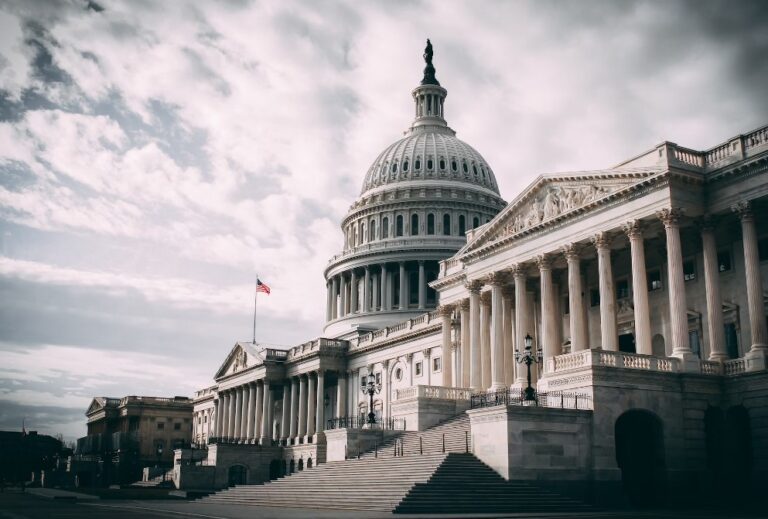The US presidential elections are an event of global interest. Every four years American citizens are called to elect their president. The American electoral system is, however, very complex.
Table of Contents
How is the American president elected? A three-phase system
The American electoral system is more complex than it may seem from the outside. In fact, presidential election day is not the only moment that determines the choice of the president of the United States. This process actually develops in three phases:
- presidential elections;
- vote of the electors in the electoral college.
Below we will see in detail what each of these phases consists of.
Who can vote in the United States?
The right to vote in the United States is virtually universal. In fact, all citizens who are at least 18 years old, the US age of majority, can vote to elect the president.
Citizens of all states can also vote to elect their representatives to congress. However, exceptions are made for citizens residing in the District of Columbia and in the unincorporated territories of the USA.
These include Guam, Puerto Rico, the Northern Mariana Islands and the US Virgin Islands. Before 1971, it was only possible to vote from the age of 21.
The American primary elections
The American Constitution does not provide for, or regulate, the institution of primary elections. In reality, however, party primary elections have been held continuously for a century.
Consequently, therefore, primary votes in America can be held differently depending on the state or party. During primary elections, citizens directly determine their party’s presidential candidate.
These elections generally take place over the course of 5 months. During this period, a series of primaries and conventions will determine which delegates will attend the final party convention.
During this last event, the names of the candidate for the role of President and Vice President for each party are determined. These two candidates form the so-called presidential ticket of the party.
The major parties running in presidential elections are generally the Democrats and the Republicans. In reality, however, independent candidates can also compete.
Finally, the outgoing president and his vice president are automatically admitted to vote for the US president. This is, however, only possible as long as the president has not already completed two terms.
The US presidential elections
The US presidential election procedure is, in effect, an indirect vote. When voting, American citizens express their preference for a candidate for president.
In fact, however, they vote for the group of voters who support that candidate. The figure of the electors, which we will delve into later, is therefore crucial to understanding how US elections work.
Each citizen can choose to vote for a specific candidate. Alternatively, he may decide to vote for all candidates associated with a political party.
Presidential elections are a highly decentralized process. In fact, electoral counting takes place at the state level. This means that the votes are counted separately in each state.
The voting system works according to the winner-takes-all principle. Consequently, the candidate who receives the majority of votes obtains all the electors attributed to a given state.
The great American voters
To fully understand the electoral mechanism of this country, we must first understand what American voters are.
The electors, or presidential electors, have the task of representing American citizens within the electoral college. This, in turn, has the task of voting for one of the candidates for the role of US president.
Each state is entitled to a varying number of electors, which is based on its population. The minimum number is generally 2 electors per state. The states with the highest number of electors are, however, California (currently 55) and Texas (currently 38).
The presidential candidate with the most votes in a state gets all of that state’s electors. Maine and Nebraska are, however, exceptions. The election of the electors takes place here, in fact, with the proportional method.
According to the American electoral system, there are 538 electors. These are divided into:
- 100 Senators;
- 435 Deputies;
- 3 electors to represent the District of Columbia.
The US electoral college
Once the presidential election determines who America’s electors are, they form the electoral college. Only at this point is it possible to determine the name of the new American president and his vice president.
Voters are asked to vote for one of the presidential candidates at their state capitol. Legally, they are not obligated to vote for a specific candidate.
Normally, however, they vote for the candidate they publicly supported and who won the seats in their state. In American history, in fact, there have been very few cases of faithless electors.
American voters vote by secret ballot. The presidential candidate who receives at least 270 votes wins. The same criterion also applies to the choice of vice president. Once voting is complete, Congress is tasked with tabulating the votes.
American election date
The U.S. Constitution determines when presidential elections take place and the electoral college.
- Primary elections: Generally begin with the Iowa Caucus between early January and early February of each leap year. They last 5 months and usually end in June;
- Presidential elections: regarding US elections, when you vote is defined by the constitution. This provides that Presidential Election Day will be held on the Tuesday following the first Monday in November. This prevents Election Day from falling on November 1st, as this is a public holiday. Presidential elections are held every 4 years, always in leap years;
- Constituency: electors cast their votes on the first Monday following the first Wednesday of December. Congress tabulates votes the first week of January;
- Inauguration of the presidency: the new presidency begins on January 20 following the elections.
The American electoral system: indirect democracy
As we have seen, the United States electoral system is quite complex. Its roots go back to the foundation of the country and its democracy. In this system, American citizens do not vote directly for a presidential candidate.
In fact, the electors will have the final say on the election of the president of the USA. This system aims to ensure representation also for citizens of smaller states and rural areas. Today, however, it is the subject of scrutiny and controversy.
Understanding how the American electoral system works is essential not only for US citizens. In fact, everyone can benefit from understanding the mechanism that elects the most influential political figures in the world.
Read also: The challenge for the White House starts: all the stages of the 2024 electoral calendar












